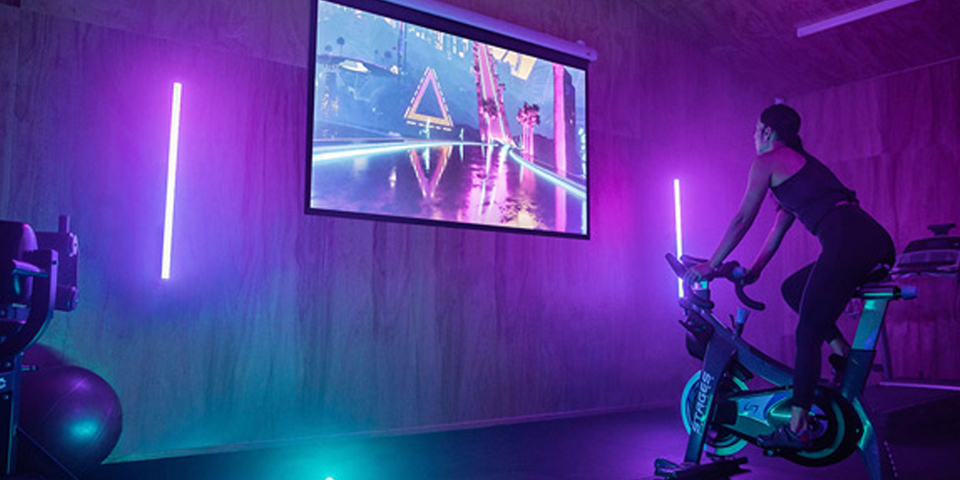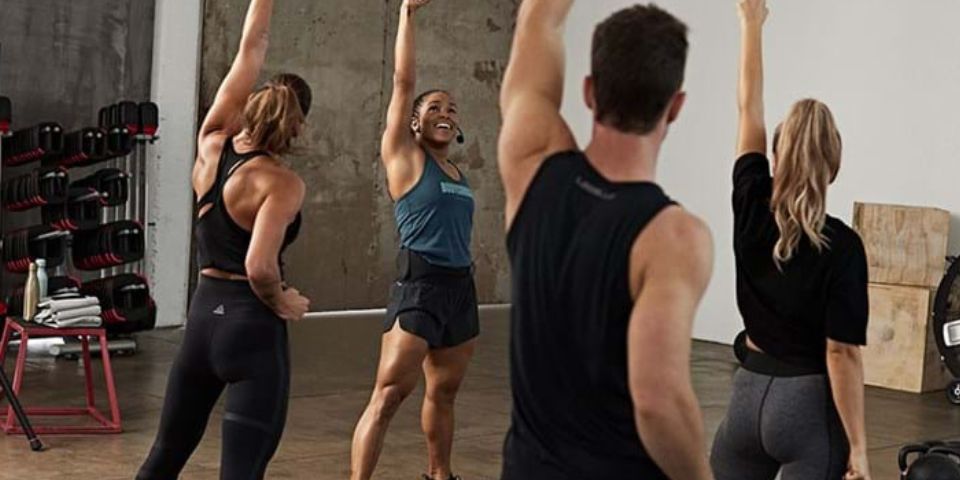As clubs contend with the double-edged sword of surging operating costs and constrained consumer spending power, managing cashflow has come sharply into focus.
Group workouts can often face scrutiny because they show up as a cost on the Profit and Loss Statement (P&L), rather than a revenue stream like personal training. But that of course, only tells half the story.
The most successful operators recognise that crowded group workout studios are the cornerstone of a successful retention strategy. After all, you have to sell an awful lot of PT sessions to make ends meet if you’re losing half your members each year.
But leading clubs don’t just leverage group workouts for retention – they double down on this strength to generate additional revenue streams. So, what does it take to stimulate cashflow through your studio? Here are nine simple steps to transform your group workout offering into a profit powerhouse:
1. MAP OUT THE OPPORTUNITY
One of the first steps to realising a highly profitable group workout offering is to identify how much revenue group workouts (both live and online) are contributing to various areas of your business. It may not yet have its own income stream on your P&L, but you can almost guarantee that group workouts account for a significant proportion of other streams.
A study by the ukactive Research Institute found members who do 3 or more Les Mills classes per week stay with their club for 50 per cent longer than those who don’t do classes – equating to an extra 9.8 months of dues per member. In other words, the members who were doing regular group workouts had twice the lifetime value of gym-only members.
As some of the group’s largest facilities in the US, Gold's Gym Newburgh and Middletown in New York are renowned for the strength of their group workout offerings.
“All the research shows that nailing group workouts is key to driving retention and winning member referrals – it's been a real game-changer for us,” says owner and managing partner Don Murphy.
“We started working with Les Mills in 2004 and it's been an integral part of our growth. It’s led to so much more business success, primarily because we knew how to implement the system, not just a program. Too often, operators don't take advantage of the entire system – not just with Les Mills, but also with other vendors’ services and products. So they don't realise the value of what they have at their fingertips. If you have a champion to really drive your entire group fitness system, that's what sets you up for strong business success.”
2. MARKET YOUR ROCKSTARS
Whether it’s through profiling them in your ad campaigns or simply asking your Instructors to promote their classes through their social media channels, rockstar Instructors have the ability to turbocharge your marketing strategy and pull members through your door.
Having great people is particularly important for persuading prospects to pick your club over others. Thirty per cent of club prospects say “a good atmosphere” is a key factor in choosing a gym to join, while 59 per cent say the people who work there are also an important consideration.

“In the clubs I’ve managed over the years, group exercise has been the number one driver of membership sales and a fantastic way to forge connections among your current members,” says legendary club operator Herb Lipsman.
In a people-centric industry, having rockstar Instructors is going to set your club apart from the competition. Your people are one advantage that your rivals can’t copy, so it really pays to get the best people and place them front and centre of your offering.”
3. DOUBLE DOWN ON REFERRALS
One of the reasons group workouts can be so effective for driving revenue is because members love them. And when members love something, they want to tell their friends about it. Group workout attendees recommend their gym to 18 per cent more people than gym-only members, while 10 per cent of group workout attendees recommend to 10+ non-members (Qualtrics, 2019).
Again, the role of the Instructors is key – their ability to fan these flames and inspire your members to do your marketing for you (by referring lots of their friends) is unparallelled. High-quality Instructors are 2.5 times (144 per cent) more likely to win member referrals for your club (than a poor Instructor), according to the Global Fitness Report.
And in an age of endless social media, making sure your studios are Instagram-friendly and well-branded is vital for inspiring members to get snapping and sharing. Get this right and members become a major cog in your social media machine and will soon do your marketing for you.
“Group workouts are a great way to drive member referrals, particularly via social media,” adds Lipsman. “Let’s face it, people don’t go on Facebook or Instagram to talk about their favourite treadmill or resistance machine, they go on there to rave about the killer class they’ve just done with an awesome Instructor and to share their sweaty victory selfie.”
4. EMBRACE EVENTS
Events are a dynamite way to create excitement among members and Instructors, as well as to attract new members through your doors and drive revenue.
One option could be to follow the lead of the YMCA Association of Northwest North Carolina, which kickstarted its peak sales period with a group fitness rock concert as a means of engaging the community through a dynamic event. Meanwhile, the JCC in Bridgewater, New Jersey has powered past its pre-pandemic club metrics through a focus on community, with in-club events serving as a central pillar.
“Things like our quarterly Les Mills launches are calendar mainstays that help light a fire under our timetable, but we’ll also set up day trips and games nights that don’t have anything to do with fitness and are all about dialling up the sense of community,” says Fitness Director Jess Kichura.
“We’re always striving to add personal touches to our events and marketing that evoke strong emotions and show our members we truly care through action rather than words.”

5. SUPERCHARGE THE SOCIAL EXPERIENCE
In addition to high-octane events, clubs are ideally placed to meet the more basic daily needs around community and human interaction that consumers have been missing. Across clubs that have made strong recoveries, dialling up the social experience has been key to re-engaging members.
The Global Fitness Report found that group workouts are now the single most popular gym activity, outstripping both strength and cardio training. That’s why a growing number of clubs are driving their recovery through a focus on group workouts, to dial up the social experience while delivering members the results that will keep them coming back.
“Since reopening our sites, we’ve seen a massive rush from members eager to get back into the club and we’re pretty much back to pre-COVID attendance levels,” says Ant Martland, Co-Founder and Marketing Director of fast-growing UAE chain GymNation.
“Group fitness and the power of our club communities have really shone through and we think this will be a key component in the wider industry’s recovery. Having been locked up and isolated for so long, people can’t wait to get back to the thrill of a buzzing live class and we’ve got members queueing at the studio door early to secure their space. People are desperate to get back to working out in groups and the past few months have been the best new sales period we’ve ever had.”
6. DRIVE DIGITAL REVENUE
With everyone’s budgets being squeezed, clubs can make a compelling pitch for consumers’ full fitness spend by offering an omni-fitness membership that negates the need for a digital fitness subscription to supplement their in-club workouts.
Whether offering digital workouts as a membership upsell in a similar vein to LA Fitness, Esporta and Everyone Active, or baking them into your core membership offering to provide added value like these Gold’s Gyms, digital content can help clubs increase yield in a challenging market. By offering members an omni-fitness service that covers their workout needs in-club and at-home, operators build firm foundations for increasing membership prices without overly upsetting members, as they can clearly demonstrate the added value they’re providing.
“When people come into our facilities now, we're not only able to show them all the services, programs and amenities we offer in-club, we're also able to showcase our digital streaming solution that they can follow at home on their phone and TV,” adds Don Murphy from Gold’s Gym.
“It just takes the value proposition to a whole new level, particularly if we can show that we’re digitally savvy and providing a completely connected member experience.

7. WIN BIG WITH SMALL GROUP TRAINING
Small group training has been a major trend in clubs over the past decade and shows no sign of relenting, with small group training becoming a mainstay on the list of top industry trends. As well as being wildly popular, high-quality small group training can also be a great source of secondary revenue.
For Baltimore (USA) boutique emPOWERed, a pioneering approach to small group training has put the club on the map thanks to its high-quality HIIT offering, which also serves as a lucrative source of ancillary revenue. emPOWERed offers small group training in the form of 8-week transformation courses (priced at US$149 (AUD209) for members and US$179 (AUD252) for non-members) that boast a 90 per cent retention rate.
“Our small group training courses are run on LES MILLS GRIT ® sessions and it’s been an absolute gem for us,” says Angela Davis, owner and CEO of emPOWERed. “Last year, GRIT brought US$21K (AUD29K) in additional revenue and this is increasing by more than 50 per cent year-on-year – members can’t get enough!”
8. CORPORATE
The concepts of ‘sweatworking’ and team bonding have long been established, with studies suggesting exercise – especially *during* working hours – can boost staff productivity, time management and work satisfaction. But as physical and mental wellbeing have become a bigger focus since the start of the pandemic, uptake of workplace wellness initiatives around the world is accelerating.
Deloitte research from 2022 found that 75 per cent of employees said improving their wellbeing is a top priority for them over the next year and companies are scrambling to support this. Of course, an onsite gym is a luxury for most businesses, so partnering with health clubs in close proximity is a much more realistic option for many firms.
The owners of state-of-the-art Stockholm gym SATS Stureplan identified this early, becoming one of the first clubs in the world to offer group cycling program THE TRIP® in 2015.
Harnessing the power of IMMERSIVE FITNESS ®, the club deploys the wow-factor of THE TRIP to attract corporate bookings of its cycle studio, charging 3000 SEK (AUD41) per class. Typically delivering two to three of these class bookings each week for teams from nearby businesses, the corporate bookings provide a handy source of ancillary revenue for the club and attract a broad pool of corporate users into the club, some of whom go on to become full members.
9. FOLLOW THE PROVEN FORMULA FOR GROUP FITNESS SUCCESS
Staying on top of group fitness in a busy club environment can be a real challenge without a solid strategy to support you. That’s why Les Mills has taken the key learnings from 55 years in the club and group fitness business to create Group Fitness Management (GFM) training – a two-day course (now available online) that offers tried and tested methods for running a successful group fitness operation.
Swedish club chain STC is one of the thousands of operators to have transformed its group fitness offering with the aid of GFM training. Faced with growing competition from rival clubs and boutiques, STC took drastic action to level-up its clubs – placing every team member from front desk staff through to fitness managers on GFM training.
The impact was instant and group fitness numbers across the clubs have been growing ever since. Attendances to group fitness classes have increased by over 40 per cent at STC Kungälv Rollsbo, where the average class occupancy has rocketed from 49 per cent to 73 per cent since the educational initiative kicked off. It’s a similar story at STC Nödinge, where average class occupancy jumped from 51 per cent to 71 per cent in just a few months.
“We have a lot of knowledge and experience in group fitness, but to get to the heart of the matter we had to strip it down and go back to basics,” says Katarina Andersson STC CEO and Co-Owner.
“So we sat down with Les Mills and we hatched out a bespoke plan to put group fitness back at the heart of our baby bringing everyone on this journey together. The impact on our class metrics has been very impressive – the whole experience was just so powerful.”

